Let me start the AI Tools review with something that might surprise you: I’m 49 years old, and about 20 months ago, I could barely tell the difference between ChatGPT and a chatbot on a website.
Opinion Piece
A brutally honest 20-month journey from “I’m too old for this” to producing 1-2 quality articles daily using AI Tools while keeping my day job.
Today? I’m churning out 1-2 well-researched articles per day, managing multiple content projects, running my own VPS infrastructure, and yes I’ve spent nearly $2,800 experimenting with AI tools along the way. Some investments paid off spectacularly. Others? Well, let’s just say I have some expensive lessons to share.
This isn’t another “10 Best AI Tools” listicle. This is the messy, honest story of what actually happened when a middle-aged content creator decided to dive headfirst into AI. The wins were bigger than expected. The fails were more expensive than they should have been. And the learning curve? Let’s talk about that.
Table of Contents
The “Oh Crap, I Need to Figure This Out” Moment
Twenty months ago, I was drowning. As a content creator trying to serve multiple clients while maintaining any semblance of personal life, I was pulling 12-hour days and still falling behind. My friends kept mentioning “ChatGPT this” and “AI that,” and honestly, I was skeptical.
Why? Because at 49, I’d seen enough tech hype cycles to be wary. Remember Second Life? Google+? Clubhouse? Yeah. I’d learned to wait before jumping on bandwagons.
But then I noticed something: the younger content creators I competed with were somehow producing 3x more content in the same time. That’s when curiosity okay, let’s call it what it was: fear of becoming irrelevant pushed me to try my first AI tool.
Spoiler alert: It changed everything. But not in the way I expected.
The Real Numbers: Where My $2,800 Went for AI Tools
Before we dive into wins and fails, let’s get brutally honest about the money. Here’s my actual spending over 20 months:
My AI Tool Investment Breakdown (20 Months)
ChatGPT Plus: $20/month × 20 months = $400
Status: Still using, totally worth it
Claude Pro: $20/month × 12 months = $240
Status: My secret weapon, best ROI
Canva Pro: $13/month × 12 months = $156
Status: Accidentally kept paying, but actually using now
Surfer SEO: $89/month × 1 month + additional costs = ~$180
Status: Cancelled after 1 month, learned expensive lesson
Random Tool Trials & One-Off Purchases: ~$1,824
Various experiments: Jasper trial, Grammarly Premium, Midjourney, random chrome extensions, courses, etc.
Total Spent: $2,800
(Yes, I track everything in a spreadsheet. I’m 49. We do that.)
Now, before you judge that “random purchases” category, let me explain. That wasn’t reckless spending. That was tuition in the University of AI Tools Trial and Error. And honestly? Some of my best lessons came from those “failed” experiments.
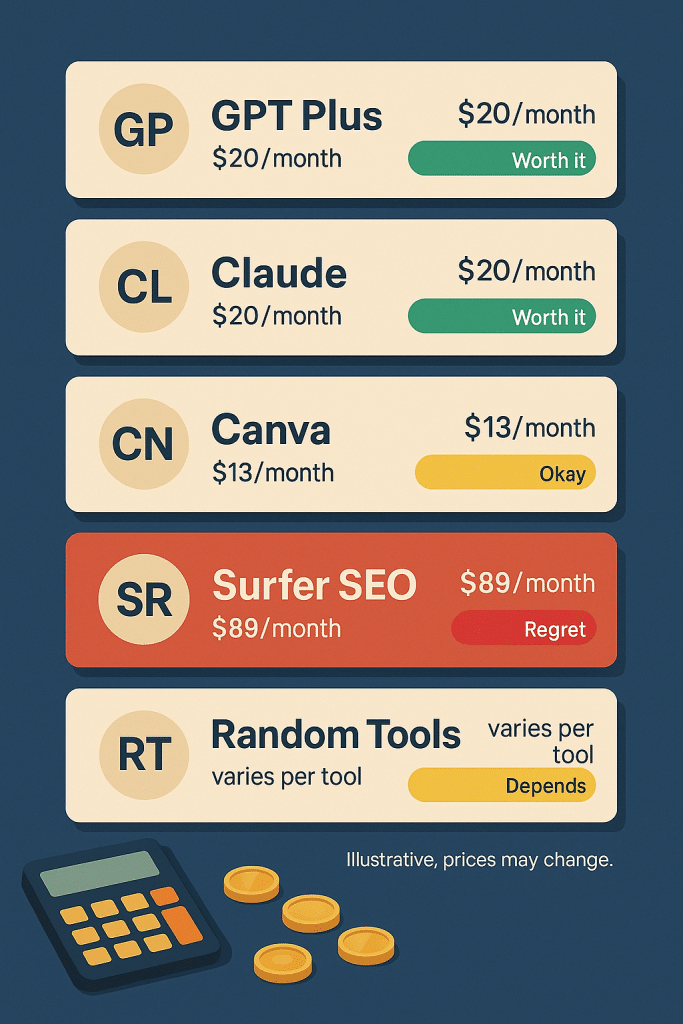
The Wins: AI Tools That Actually Changed My Life
ChatGPT Plus: The Gateway Drug ($400 over 20 months)
I started with the free version of ChatGPT. Played around for a week. Thought it was neat but didn’t see the hype. Then someone told me about GPT-4 (Plus subscription), and I figured “$20 won’t kill me.”
What actually happened:
Within the first month, ChatGPT Plus helped me cut my research time for articles from 3 hours to about 45 minutes. Not because it wrote the articles for me (it didn’t more on that later), but because it could:
- Synthesize complex topics into digestible outlines
- Suggest angles I hadn’t considered
- Draft rough structures I could then humanize
- Act as a brainstorming partner when I was stuck
The unexpected benefit: It made me a better writer. Seriously. By seeing how AI structured arguments, I started noticing patterns in my own writing that needed improvement. It was like having a writing coach who never got tired of my questions.
ROI Calculation: If it saves me 2 hours per article, and I write 1-2 articles daily, that’s 30-60 hours saved monthly. At my hourly rate, that’s a ridiculous return on a $20/month investment.
The catch: There’s a learning curve. The first two weeks, my prompts sucked. I was treating it like Google (“best AI tools for content”). It took practice to learn how to have actual conversations with it.
Claude Pro: The Plot Twist ($240 for 12 months)
Here’s where things get interesting. About 8 months into my AI tools journey (after spending $160 on ChatGPT Plus), everyone was talking about ChatGPT. So when someone mentioned “Claude,” I dismissed it. Why would I need another AI tool?
Then I tried it. And honestly? Claude became my favorite.
Why Claude won me over:
1. Better at nuanced writing
ChatGPT can be… enthusiastic. Sometimes too enthusiastic. Claude has this more measured, thoughtful tone that requires less editing to sound human. For opinion pieces and in-depth analysis, Claude just gets it.
2. Longer context window
I can paste entire drafts, competitor articles, research notes, and ask Claude to synthesize everything. With ChatGPT, I was constantly hitting limits and losing context.
3. Better at admitting limitations
This sounds weird, but Claude will tell you when it’s uncertain or when it doesn’t have current information. ChatGPT sometimes… makes things up confidently. At 49, I appreciate honesty over confidence.
My current workflow:
- ChatGPT: Quick brainstorming, research synthesis, first drafts
- Claude: Detailed writing, editing, nuanced content, anything requiring depth
Do I need both? Technically, no. But having both is like having a creative brainstormer (ChatGPT) and a thoughtful editor (Claude) on your team. Combined cost: $40/month. Value to my workflow: Priceless.
Honest moment: I initially got Claude just to compare. I kept it because it made me 30% more efficient than using ChatGPT alone. That’s not hype that’s measured by actual article output.
Canva Pro: The Accidental Win ($156 for 12 months)
Okay, confession time. I signed up for Canva Pro during a free trial for one project. Then I forgot to cancel it. For six months. I’m not proud of this.
But here’s the thing when I finally noticed the charges and went to cancel, I realized: I’d actually been using it. Without even thinking about it, Canva had become part of my workflow.
What changed:
Before Canva Pro, creating featured images for articles was a 45-minute ordeal involving Photoshop, stock photo sites, and general frustration. Now? I use Canva’s AI image generator, templates, and magic resize features. Five minutes, done.
The AI tools features (background remover, Magic Write, AI image generation) weren’t why I kept it they were just nice bonuses. I kept it because the entire ecosystem made visual content creation painless.
Lesson learned: Sometimes the best tools are the ones you don’t even notice you’re using. They just quietly make your life easier.
For Now: I choose to have Canva when I need it, I just one time payment option for one day or for a week only
The Fails: Expensive Lessons in What NOT to Do
Surfer SEO: The Rush Decision That Cost Me ($180 wasted)
Let me tell you about my biggest AI tools regret. I was about 6 months into my AI journey, feeling confident, seeing results. I kept hearing about Surfer SEO from every SEO guru online. “Optimize your content!” “Rank higher!” “AI-powered insights!”
So I signed up for the $89/month plan without doing my homework. Big mistake.
What went wrong:
1. I didn’t understand what I was buying
Surfer SEO is powerful if you know what you’re doing with SEO. I thought it would magically make my content rank better. It doesn’t work that way. It gives you data, but you need to know how to interpret and implement it.
2. Hidden costs everywhere
The $89/month got me 30 content audits. Sounds great, right? Except I was writing 30-60 articles per month. So I’d need to upgrade to a higher tier ($179/month) or buy additional audits. Suddenly, my “affordable” tool was going to cost $200+/month.
3. Integration paralysis
Surfer wanted me to change my entire workflow. Write in their editor. Follow their exact recommendations. For someone already using ChatGPT and Claude effectively, this felt like starting over.
4. I wasn’t ready for it
This is the real lesson. Surfer SEO is probably great for advanced SEO professionals or agencies. But I was still learning the basics of AI tools for content creation. I needed to walk before I could run.
What I should have done:
- Started with the 7-day trial (I jumped to paid immediately, FOMO is real)
- Watched tutorials BEFORE subscribing
- Calculated actual costs based on my volume needs
- Asked myself: “Does this solve a problem I actually have?”
After one month and about $180 total (subscription + extra content audits because I didn’t understand the limits), I cancelled. That money taught me an important lesson about shiny object syndrome in the AI world.
The “Random Experiments” Category: $1,824 of Learning
Remember that $1,824 I spent on random trials and tools? Here’s what that really was:
Smart experiments:
- Jasper AI trial ($49) – Learned AI tools for writing works differently; some are better for marketing copy, others for long-form
- Grammarly Premium ($144/year) – Actually useful, still using it
- Midjourney subscription ($240 over 6 months) – Beautiful images but couldn’t justify the cost vs Canva
- Various AI courses on Udemy ($150) – Worth every penny for understanding fundamentals
Dumb experiments:
- 5+ Chrome extensions that promised “AI magic” ($15-30 each) – Most were garbage
- An AI “content strategy” course that was just ChatGPT tutorials ($97) – Total waste
- Three different AI tools for social media schedulers before realizing I don’t need this yet
Unexpected wisdom: That $1,800 wasn’t wasted! it was market research. Now I can confidently tell you what’s worth trying and what’s marketing hype. That knowledge is valuable.
The Age Factor: Why Being 49 Was Both a Disadvantage and an Advantage
Let’s address the elephant in the room: I mentioned my age three times already. Why does it matter?
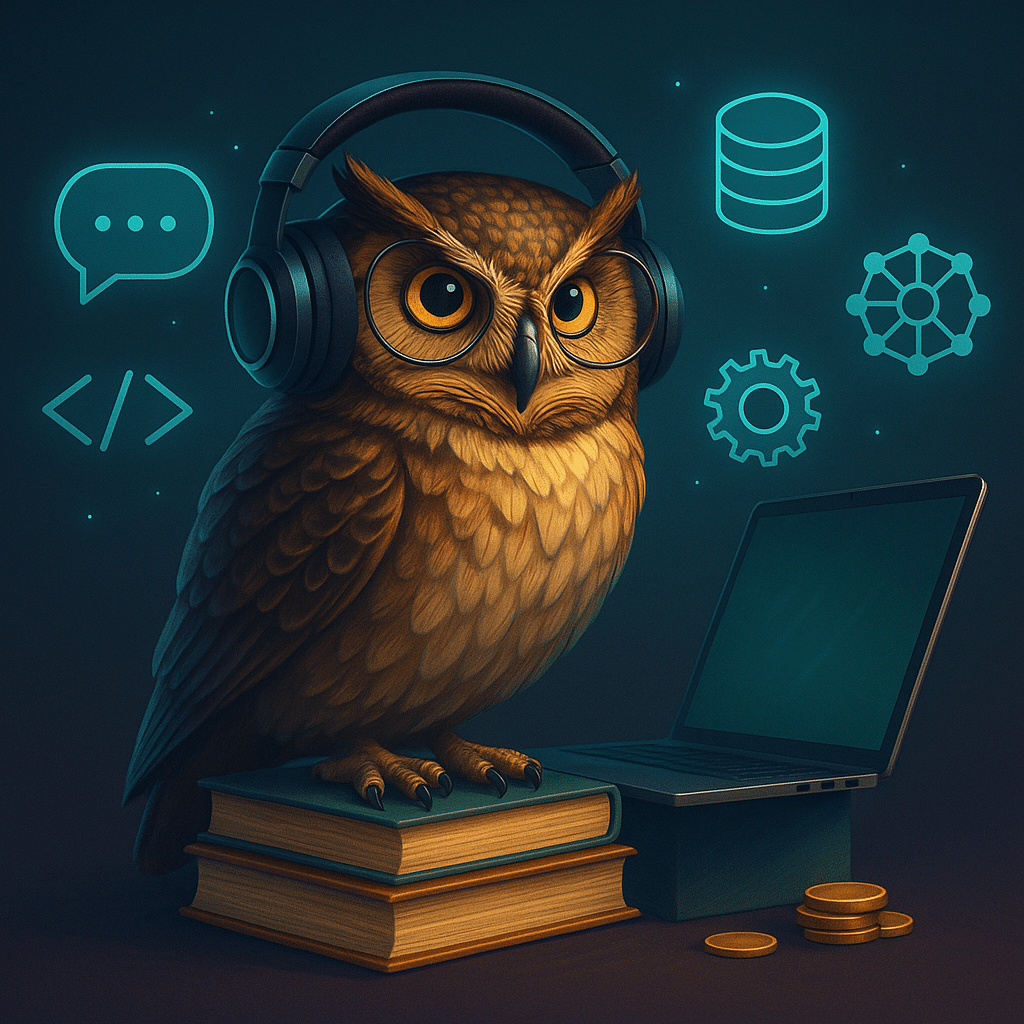
The disadvantages were real:
1. Steeper learning curve
My 25-year-old competitors were native to this stuff. They understood UX patterns, subscription models, cloud-based tools intuitively. I had to learn what “tokens” meant in AI tools pricing. (Seriously, why can’t they just say “words”?)
2. More skepticism to overcome
I’d been burned by tech hype before. This made me slower to adopt, more hesitant to invest. Sometimes that caution saved me money (see: Surfer SEO). Sometimes it cost me opportunities.
3. Fewer peers to learn from
Most AI communities skew younger. Reddit discussions referenced memes I didn’t understand. Discord servers moved too fast. I felt out of place.
But here’s the plot twist my age became an advantage:
1. Better at identifying bullshit
When an AI tools promises to “10x your productivity overnight,” my bullshit detector goes off. Younger creators sometimes chase every shiny object. I’ve learned to wait, watch, and evaluate.
2. More disciplined with money
I track every dollar (that spreadsheet isn’t a joke). This meant I could actually measure ROI, not just feel good about “investing in myself.” My $2,800 spend was deliberate, tracked, and mostly strategic.
3. Stronger writing fundamentals
Here’s the secret: AI amplifies your existing skills. If you’re already a decent writer, AI makes you great. If you’re a weak writer, AI just helps you produce weak content faster. My 25 years of writing experience meant I could edit AI outputs into something genuinely good.
4. Better at process and systems
Young creators focus on tools. Older creators focus on workflows. I didn’t just adopt AI that I integrated into a system. That’s why I can produce 1-2 quality articles daily while maintaining a day job.
The real lesson: Age doesn’t matter. Mindset does. I know 30-year-olds who refuse to try AI because “it’s not real writing.” I know 60-year-olds who are crushing it with AI tools. The only question is: are you curious enough to learn?
The Productivity Reality: Can You Really Write 1-2 Articles Daily?
Yes. But let me explain what that actually means, because “1-2 articles daily” sounds impossible (or like the quality must be terrible).
My current workflow (refined over 20 months):
Morning (6:00 AM – 7:30 AM): Article #1
- 6:00-6:15 AM: ChatGPT brainstorming – topic angles, outline, research questions
- 6:15-6:45 AM: Claude drafts the main content while I sip coffee and provide direction
- 6:45-7:15 AM: I rewrite intro and conclusion (always), add personal insights, fix AI’s weird phrasings, inject personality
- 7:15-7:30 AM: Canva for featured image, final read-through, publish
Evening (9:00 PM – 10:00 PM): Article #2 (if needed)
- Same process, but sometimes I just do research and outlining, then write the next morning
What this workflow actually produces:
- 1,200-2,000 word articles
- SEO-optimized but not keyword-stuffed
- Genuinely useful content (I hope)
- Written in my voice, not AI’s voice
The secret nobody tells you: AI tools doesn’t write your articles. It creates a scaffold that you build on. The first draft from Claude might be 70% there. I spend 30% of my time making it 100% mine.
Time saved vs. before AI:
- Before: One 1,500-word article = 5-6 hours (research, outline, writing, editing)
- Now: One 1,500-word article = 1.5-2 hours (AI tools for research, AI tools for first draft, human editing and personality injection)
- Saved: 3-4 hours per article
That time savings is why I can do this while keeping my day job. I’m not working more hours, I’m working smarter.
Beyond Content: When AI Tools Made Me Technically Capable
Everything I’ve talked about so far has been content creation. But here’s a plot twist I didn’t see coming: AI tools turned me into someone who can handle technical tasks I’d avoided for a decade.
The 10-Year VPS Failure
About 10 years ago, I decided to learn server management. The plan:
- Set up my own VPS (Virtual Private Server)
- Host WordPress sites independently
- Save money on managed hosting
- Have full control
What actually happened: I bought a VPS. Read tutorials. Watched courses. Got overwhelmed. Gave up. Wasted months and hosting fees on a server I barely touched.
Why did I fail? The learning curve was brutal. Commands I didn’t understand. Errors I couldn’t decipher. Fear of breaking something. No time to dedicate months to learning sysadmin skills.
The AI-Assisted Breakthrough
Fast forward to early 2024. I’m using ChatGPT and Claude daily for writing. One random Saturday, I thought: “What if AI tools could help me finally figure out this VPS thing?”
I opened Claude. Described my old abandoned VPS project. Explained what I wanted: proper WordPress setup, security, SSL certificates, the works.
What happened shocked me.
Over two weekends, just two weekends I:
✅ Set up a fully functional VPS from scratch
✅ Configured multiple WordPress installations
✅ Implemented proper security (firewall, SSH keys, fail2ban)
✅ Set up SSL certificates
✅ Optimized database performance
✅ Created automated backup systems
Tasks that stumped me for months 10 years ago? Done in two weekends with AI guidance.
How AI Tools Changed Technical Learning
The old way (that failed me):
- Read documentation → Get confused → Google errors → Get more confused → Give up
The AI way (that worked):
- Describe what I want in plain English
- AI tools could translates to specific commands
- Hit an error? Paste it to ChatGPT
- Get explanation in language I understand
- Actually learn what’s happening, not just copy-paste
Example conversation with Claude:
Me: “I’m getting ‘permission denied’ when trying to run this command. What does that mean?”
Claude: “This means your current user account doesn’t have the necessary permissions. You need to either run it with ‘sudo’ (which gives temporary admin rights) or change the file permissions. Here’s what each approach means…”
That’s the difference. Not “RTFM” or “use sudo.” But actual understanding.
The WordPress Management Transformation
Now I manage my WordPress sites using AI tools for tasks I would’ve paid developers hundreds of dollars for:
Database cleanup and optimization:
- Me to Claude: “My database is getting bloated, what can I safely clean?”
- Claude writes SQL queries, explains what each one does
- I run them confidently because I understand the impact
Server troubleshooting:
- Website slow? ChatGPT helps me diagnose (check memory, CPU, queries)
- Error logs cryptic? Paste them in, get plain-English explanations
- Security alerts? AI walks me through proper response
Command-line operations:
- Me: “I need to find all files modified in the last 24 hours”
- AI: “Here’s the command and what each part means”
- I learn Linux commands by understanding, not memorizing
The “I Can’t Believe I’m Doing This” Moments
Things I’ve done in the past 6 months that I couldn’t imagine doing before:
- SSH into servers and navigate confidently
- Write and understand basic bash scripts
- Configure web server settings (Nginx, Apache)
- Manage MySQL databases without phpMyAdmin
- Set up automated deployment workflows
- Troubleshoot DNS and SSL issues
Am I a systems administrator? No. Could I get a job at Amazon AWS? Absolutely not. But can I manage my own technical infrastructure without constantly hiring help? Yes.
At 49 years old.
The Real ROI Nobody Talks About
Financial savings:
- Managed WordPress hosting I don’t need anymore: $40/month = $480/year
- Developer fees avoided: Conservatively $500-1,000/year
- Total saved: ~$1,000-1,500 annually
But the bigger win:
The confidence. The empowerment. The feeling of “I can figure this out” instead of “I need to hire someone.”
When my site went down at 11 PM last month, I didn’t panic. I:
- Checked error logs
- Pasted relevant errors into ChatGPT
- Got diagnosis and fix
- Implemented solution
- Site back up in 20 minutes
Old me would’ve sweated through the night, emailed support, and waited hours for help.
The Learning Principle
Here’s what I realized: AI tools doesn’t replace learning. It makes learning accessible.
I’m actually learning server management, not just executing commands blindly. Because AI tools can:
- Translate jargon into plain language
- Explain the “why” behind technical decisions
- Provide context for error messages
- Adjust explanations to my knowledge level
It’s like having a patient, never-judgmental mentor who has infinite time to explain things at your pace.
For Fellow Non-Technical Folks
If you’re like me, as acontent creator, marketer, non-developer, this might be the most valuable use case for AI tools you haven’t considered.
You don’t need to become a developer. But you can become technically capable enough to:
- Solve your own problems
- Understand what developers are telling you
- Make informed decisions about your infrastructure
- Save money on tasks you can now handle
The technical skills barrier has dropped dramatically. Not because technology got simpler, but because AI tools makes complexity understandable.
Cost to unlock this capability? The same $40/month I’m already paying for ChatGPT Plus and Claude Pro for content creation. No additional investment.
Time required? I spend maybe 2-3 hours per month on technical maintenance that used to require hiring help.
Skill level needed? If you can describe what you want in English, AI tools can help you do it.
That VPS I failed to configure 10 years ago? It’s running six WordPress sites right now. All managed by a 49-year-old content creator who barely knew what SSH meant two years ago.
If I can do this, you probably can too.
The Comparison: What’s Actually Worth Your Money?
| Tool | Cost/Month | My Rating | Best For | Worth It? |
|---|---|---|---|---|
| ChatGPT Plus | $20 | ⭐⭐⭐⭐⭐ | Brainstorming, quick drafts, research synthesis, variety of tasks, technical help | ✓ Absolutely |
| Claude Pro | $20 | ⭐⭐⭐⭐⭐ | Nuanced writing, long-form content, editing, depth, technical explanations | ✓ Yes (after mastering basics) |
| Canva Pro | $13 | ⭐⭐⭐⭐ | Visual content, featured images, social media graphics | ✓ Yes (if you create visual content) |
| Surfer SEO | $89+ | ⭐⭐⭐ | Advanced SEO optimization, data-driven content strategy | ✗ Not for beginners |
| Grammarly Premium | $12 | ⭐⭐⭐⭐ | Editing, clarity, catching embarrassing typos | ✓ Yes |
| Jasper AI | $49+ | ⭐⭐⭐ | Marketing copy, ads, specific templates | ? Only if you need marketing focus |
| Midjourney | $10-30 | ⭐⭐⭐⭐ | Beautiful AI images, artistic content | ? Nice to have, not essential |
My honest recommendation for starting out:
Month 1-2: Start with $20/month
- ChatGPT Plus ($20) – Learn the fundamentals, experiment, find your workflow
- Don’t buy anything else yet
Month 3-4: Add $20/month if seeing results
- Claude Pro ($20) – Once you’re comfortable with ChatGPT and want to level up
- Total: $40/month
Month 5-6: Add tools for specific needs
- Canva Pro if you need visuals ($13)
- Grammarly if you want editing help ($12)
- Total: $40-65/month depending on needs
Month 6+: Evaluate ROI before adding more
- Only add tools that solve specific problems you’ve identified
- Avoid shiny object syndrome (learn from my Surfer SEO mistake)
The Honest Truth: What AI Tools Can and Can’t Do
After 20 months and $2,800, here’s what I’ve learned about AI’s real capabilities:
What AI is genuinely great at:
- First drafts – AI tools can create a scaffold faster than you can outline
- Research synthesis – Takes 10 sources and summarizes key points
- Overcoming blank page syndrome – Always gives you something to start with
- Brainstorming – Generates angles you might not think of
- Repetitive tasks – Product descriptions, meta descriptions, social posts
- Editing suggestions – “Make this more concise” actually works
- Technical translation – Turns complex commands into understandable English
- Problem diagnosis – Helps decode error messages and issues
What AI tools absolutely cannot do (no matter what the gurus say):
- Write with your unique voice – AI tools has a generic “helpful assistant” tone
- Create truly original insights – It remixes existing knowledge, doesn’t innovate
- Understand your audience like you do – You know your readers’ pain points, AI guesses
- Make strategic decisions – “Should I write about X or Y?” requires judgment
- Replace creativity – AI augments creativity, doesn’t replace it
- Build relationships – Your personality builds your audience, not AI’s efficiency
The 70/30 rule I live by:
- 30% of my content creation is AI-generated
- 70% is me editing, adding personality, injecting insights, making it mine
If your ratio is flipped (70% AI, 30% human), your content probably sucks. Sorry, but it’s true.
The Learning Curve Challenge: Advice for Fellow “Mature” Content Creators
Look, I’m not going to pretend the learning curve wasn’t steep. At 49, trying to keep up with technology that changes monthly is humbling. Here’s what helped me:
1. Give yourself permission to suck at first
My first month of ChatGPT prompts were terrible. I’d write “write an article about AI tools” and get garbage back. Then I’d blame ChatGPT. The tool wasn’t the problem, it was my prompts were.
Solution: I spent $39 on a Udemy course about prompt engineering. Best $39 I ever spent. Suddenly I understood how to communicate with AI.
2. Start embarrassingly small
I didn’t start by trying to write full articles with AI tools. I started by asking ChatGPT to help me brainstorm headline ideas. Then I asked it to outline one section. Then I asked it to draft a paragraph.
Baby steps aren’t glamorous, but they build confidence.
3. Find your learning style
YouTube tutorials work great for some people. They drove me crazy too slow, too much fluff. I learned better from:
- Written guides I could reference
- Community forums where I could ask specific questions
- Trial and error (expensive but effective)
4. Join communities (even if you feel out of place)
I joined three AI tools writer communities. I mostly lurked. But reading other people’s questions taught me things I didn’t know I needed to learn.
5. Track everything
Remember that spreadsheet? It wasn’t just for money. I tracked:
- Which tools I tried
- What problems they solved (or didn’t)
- Time saved per task
- Quality of outputs
This data helped me see what was actually working vs. what just felt productive.
6. Embrace the “figure it out” mentality
Younger folks Google everything instantly. I was raised to “read the manual.” Neither approach works with AI, it evolves too fast for manuals, and Google searches often return outdated info.
I had to learn to just… experiment. Try things. Break things. That was uncomfortable at 49. But it’s also been weirdly liberating.
The Real ROI: Was $2,800 Worth It?
Let’s do actual math, because that’s what 49-year-olds do.
Time saved per month:
- Average: 1.5 articles per day
- Time saved per article: 3 hours
- Days per month: 22 working days
- Total time saved: ~99 hours per month
Value of that time (conservative estimate):
- My hourly rate for content work: $50/hour (I wish it was higher, working on it)
- 99 hours × $50 = $4,950 per month in extra capacity
Current monthly tool costs: $40
(ChatGPT Plus $20 + Claude Pro $20)
Additional savings from VPS/technical work:
- Hosting costs saved: $40/month
- Developer fees avoided: ~$80/month average
- Total additional savings: $120/month
Updated ROI: $5,070 value for $40 cost = 126x return
Even if you cut my estimates in half (maybe I’m being generous), the ROI is still ridiculous.
But here’s what the spreadsheet doesn’t show:
- I’m less stressed because I’m not drowning in deadlines
- I have time to actually enjoy my evenings instead of working until midnight
- I’m learning skills that will be valuable for the next 20 years of my career
- I’m competing with creators half my age and winning
- I can solve my own technical problems instead of feeling helpless
Was $2,800 over 20 months worth it? Hell yes. Would I do it again? Absolutely. Would I do it differently? Definitely (see: Surfer SEO disaster).
The Actionable Advice: Start Small, Scale Smart
If you’re reading this thinking “This sounds great, but where do I start?”, here’s my advice distilled from 20 months of trial and error:
Your 90-Day AI Tools Implementation Plan
Days 1-7: Free exploration
- Create free ChatGPT account
- Spend 30 minutes daily just playing with it
- Ask it to help with actual work tasks (don’t just test it, use it)
- Don’t spend any money yet
Days 8-30: Paid basics
- If you’re getting value, upgrade to ChatGPT Plus ($20/month)
- Learn to write better prompts (watch 2-3 YouTube tutorials)
- Create 10 pieces of content with AI Tools assistance
- Track time saved vs. cost
Days 31-60: Refine workflow
- Identify what works and what doesn’t in your process
- If seeing clear ROI, consider adding Claude Pro ($20/month)
- Focus on consistency, not perfection
- Resist urge to buy every tool everyone recommends
Days 61-90: Strategic expansion
- Only add new tools if they solve a specific problem you’ve identified
- Calculate expected ROI before subscribing to anything
- Use free trials religiously
- Remember: more tools ≠ better results
The golden rule I learned the hard way: Don’t buy a tool until you can articulate exactly what problem it solves that your current setup doesn’t. If you can’t explain it, you don’t need it yet.
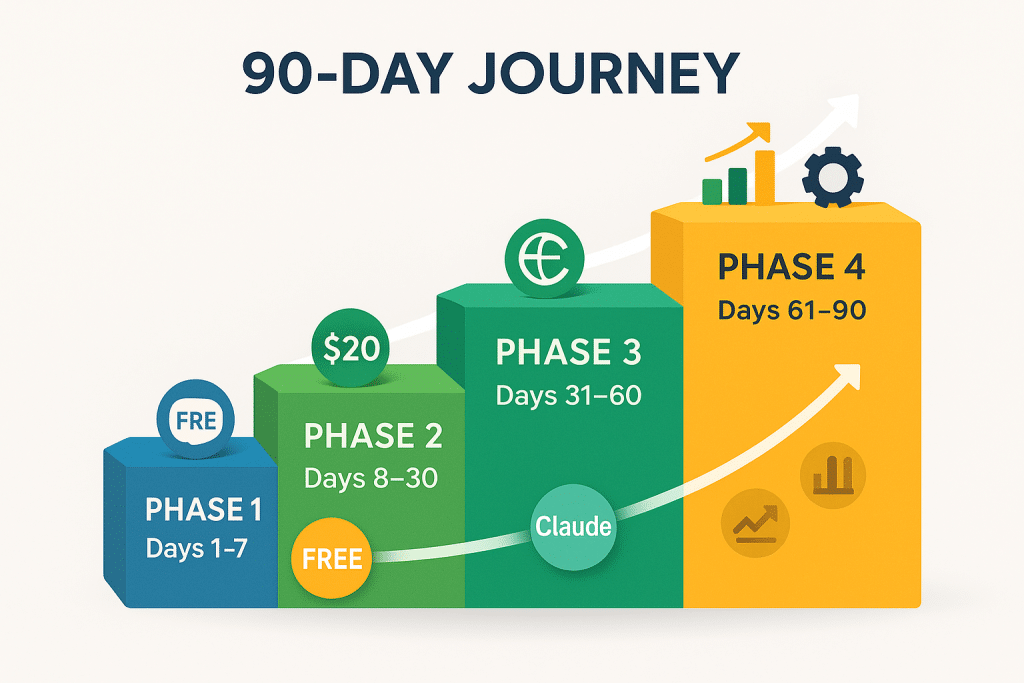
What I’d Tell My 20-Months-Ago Self
If I could go back to that skeptical 47-year-old (yeah, I started this journey when I was 47 feels like a lifetime ago), here’s what I’d say:
1. You’re not too old for this
That fear you have about being “too old to learn new tech”? It’s bullshit. Your years of experience will actually be an advantage. Trust me.
2. Start with ChatGPT Plus, ignore everything else for 3 months
You’re going to want to try Jasper, Surfer SEO, and fifteen other tools in your first month. Don’t. Master one tool first. The rest can wait.
3. That Surfer SEO impulse buy? Cancel it
You’re not ready. You’ll waste $180 and feel stupid. Save the money, learn AI tools basics first, revisit in 6 months if still interested.
4. Take that prompt engineering course earlier
You’ll waste 2 months writing terrible prompts. Spend $39 on a course in week 2, save yourself the frustration.
5. Track everything from day one
Your spreadsheet instinct is correct. Track costs, time saved, outputs. You’ll need this data to make smart decisions later.
6. Quality > Quantity
You’re going to be tempted to publish everything AI spits out. Don’t. Your reputation is built on quality. AI tools helps you produce more, but you still need to make it good.
7. Your age is an asset, not a liability
Younger creators will chase every trend. You’ll evaluate carefully. This patience will save you thousands of dollars and countless headaches.
8. You’ll spend about $2,800 over 20 months
Some of it will feel wasted. It’s not! it’s education. But you can learn from my mistakes and spend maybe $1,500 instead.
9. Claude is going to be your secret weapon
Everyone talks about ChatGPT. You’ll discover Claude in month 8 and kick yourself for not finding it sooner. Try it in month 3.
10. Ask AI about that VPS problem
You know that server management thing you failed at 10 years ago? AI can help you figure it out. Try it. You’ll be shocked.
11. This will change your career
Right now you’re drowning. In 20 months, you’ll be producing 1-2 articles daily, managing your own servers, and working a day job. You’ll feel in control of your time for the first time in years. It’s going to be worth every penny and every frustrating learning moment.
The Uncomfortable Truth: AI Tools Isn’t Going Away
Look, I get it. Maybe you’re reading this and thinking “I don’t want to use AI tools. I’m a real writer.”
I had the same thought 20 months ago. But here’s the uncomfortable truth I had to accept:
AI isn’t replacing writers. AI tools is creating two classes of writers:
- Writers who use AI tools to amplify their skills and 10x their productivity
- Writers who refuse to adapt and slowly become obsolete
I know that sounds harsh. But in my 20 months of using AI, I’ve watched content creators who embraced it grow their businesses dramatically. And I’ve watched talented writers who refused to try it struggle to compete.
The good news: Using AI doesn’t mean selling your soul. It means using a power tool instead of hand tools. You’re still the craftsman. You’re still making the creative decisions. You’re just working smarter.
At 49, I don’t have 30 years of career ahead to wait and see how this plays out. I needed to adapt now or risk irrelevance. Best decision I’ve made.
Final Thoughts: Worth Every Dollar (Even the Wasted Ones)
So, was spending $2,800 over 20 months on AI tools worth it?
Let me answer with a story. Last week, a client asked me to write 5 high-quality articles by end of week. Two years ago, that would’ve meant cancelled plans, late nights, and stress. This time?
I delivered all 5 articles in 3 days, with time left over for a weekend trip I’d been postponing for months.
That’s what $2,800 bought me. Not just productivity freedom.
The honest summary:
- Total spent: $2,800 over 20 months
- Current monthly cost: $40 (ChatGPT Plus + Claude Pro)
- Time saved: ~99 hours per month
- Productivity increase: 1-2 articles daily vs. 1 every 2-3 days before
- Technical capability gained: Managing VPS, WordPress, databases independently
- Additional savings: $120/month in hosting and developer costs
- Stress reduction: Immeasurable
- Career trajectory: Completely transformed
Tools I’d buy again: ChatGPT Plus, Claude Pro, Canva Pro, Grammarly Premium
Tools I regret: Surfer SEO (timing was wrong), various impulse buys
Biggest lesson: Start small, scale smart. You don’t need every tool, you need the right tools for your specific situation.
Would I recommend this journey to another 49-year-old content creator? Absolutely. But I’d also tell them to read this article first and learn from my expensive mistakes.
One Last Piece of Advice
If you’re sitting there thinking “I should try this, but…” – stop. That “but” is fear talking. I was there 20 months ago.
You don’t need to spend $2,800 to start. You need to spend $0 for week one (free ChatGPT), then maybe $20 for month two if it’s working.
The cost of not adapting? Much higher than $20/month.
At 49, I learned that you’re never too old to learn something new. But you might be too stubborn. Don’t let pride cost you your competitive edge.
P.S. If you’re curious about my exact workflow, what prompts I use, or have questions about specific tools, drop a comment below. I’m still figuring things out, but I’m happy to share what I’ve learned so far. And hey, if I can do this at 49, you can do it at any age.
Now if you’ll excuse me, I have an article to write. With Claude’s help, it should take me about 90 minutes. Not bad for a middle-aged guy who couldn’t tell ChatGPT from a chatbot 20 months ago.
FAQ
Why spend $2,800 on AI tools—what did you actually learn?
A curated stack beats a crowded one. Consolidating overlapping tools, tracking usage, and cancelling low-impact subscriptions produced more value than adding “one more app.”
Which tools delivered the strongHow do you decide which AI tools to keep or cut?est ROI?
Score each tool monthly by: outcomes delivered, time saved, adoption (you/team), reliability, data control, and cost per outcome. Keep only the top third.
What’s the fastest way to measure ROI from AI software?
Use a simple formula: (hours saved × hourly value) − monthly cost. Validate with a 2-week baseline and a 2-week pilot so the numbers are real—not guesses.
Should you pay annually or monthly?
Start monthly to validate fit and reliability. Switch to annual only when a tool is business-critical, stable in your workflow, and offers a strong discount with easy cancellation terms
How do you avoid vendor lock-in?
Prefer tools with exportable data, open formats, clear API access, SSO, and role-based permissions. Document migration steps before you commit to long contracts.
What’s a good “starter stack” for solo creators or small teams?
One writing/model endpoint, one RAG/search layer, one automation router (Zapier/Make/n8n), one analytics dashboard, and one asset tool (image/video). Add only when a workflow demands it.
How can you keep outputs on-brand and accurate?
Use templates, style guides, retrieval/grounding for facts, and require sources for claims. For public content, keep human review in the loop.
What’s the biggest hidden cost?
Tool sprawl and context switching. Every extra login steals focus. Merge overlapping apps and standardize prompts, folders, and naming.
Any privacy or compliance basics to follow?
Limit data access (least privilege), turn off training on your data when possible, log automations, and review vendor security pages and data-processing terms.
How do you roll AI out to a team without chaos?
Pilot with one workflow, define success metrics, publish an SOP, then scale. Track exceptions weekly and iterate prompts/templates centrally.
How do free trials not become paid “surprises”?
Calendar the renewal date the moment you start a trial, tag the subscription in your finance app, and require a “re-approve” step before any trial converts.
What’s a sensible monthly AI budget?
Work backward from value: cap spend at ~10–20% of the savings or revenue the stack creates. If a tool doesn’t clear the bar in 30 days, cut it.
About the Author: I’m a 49-year-old content creator who spent the last 20 months (and $2,800) figuring out AI tools so you don’t have to make the same expensive mistakes. Still learning, still experimenting, still occasionally forgetting to cancel subscriptions.
Last updated:
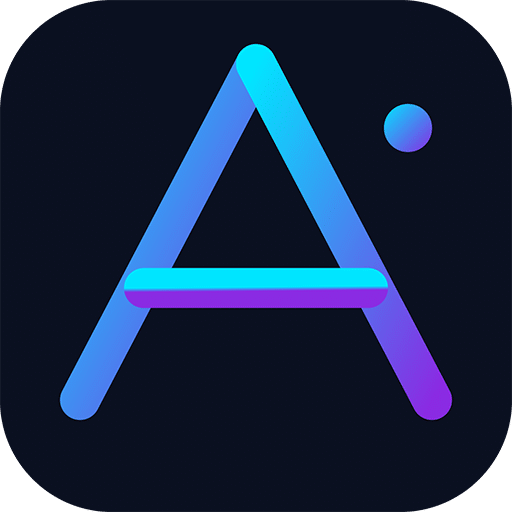
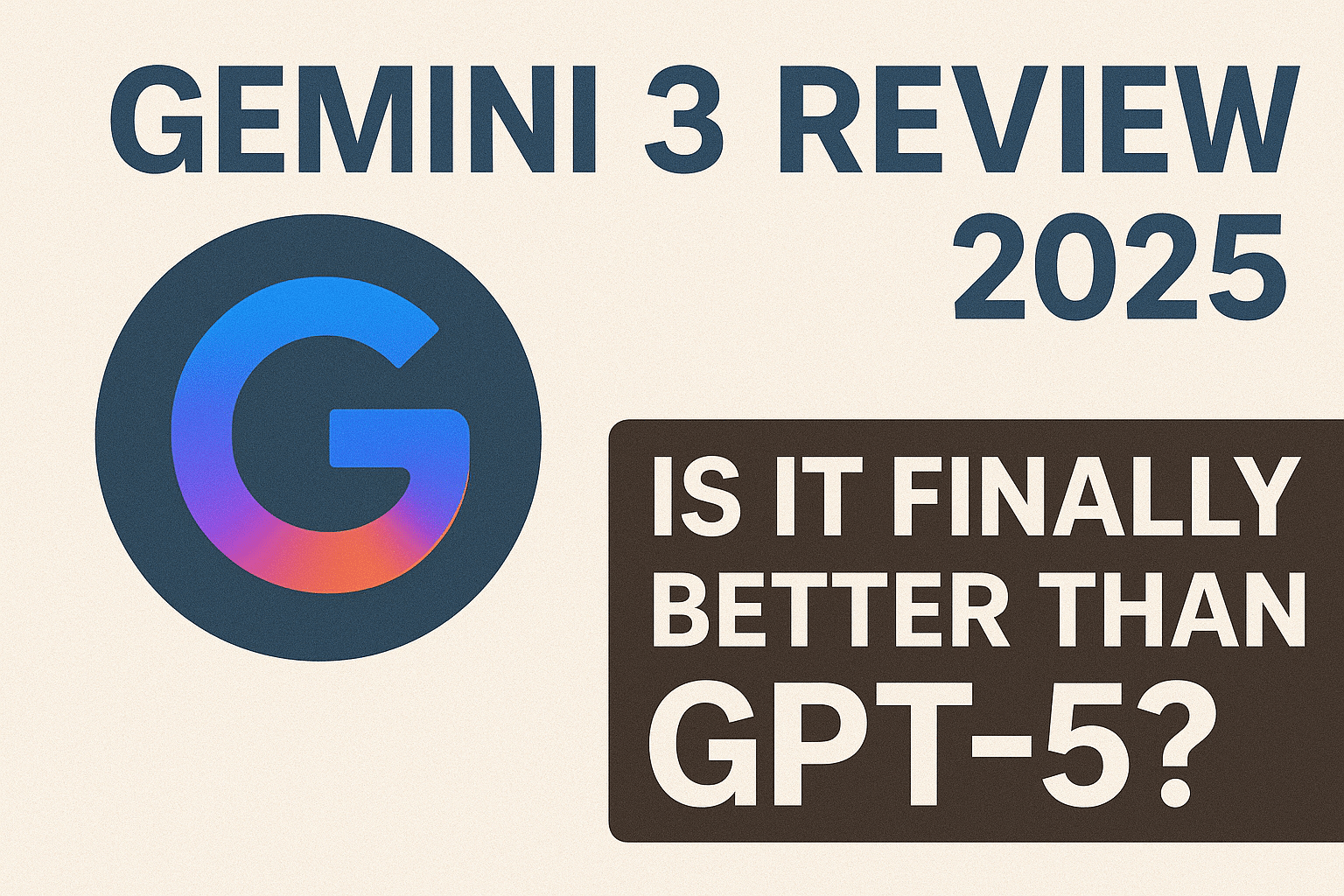
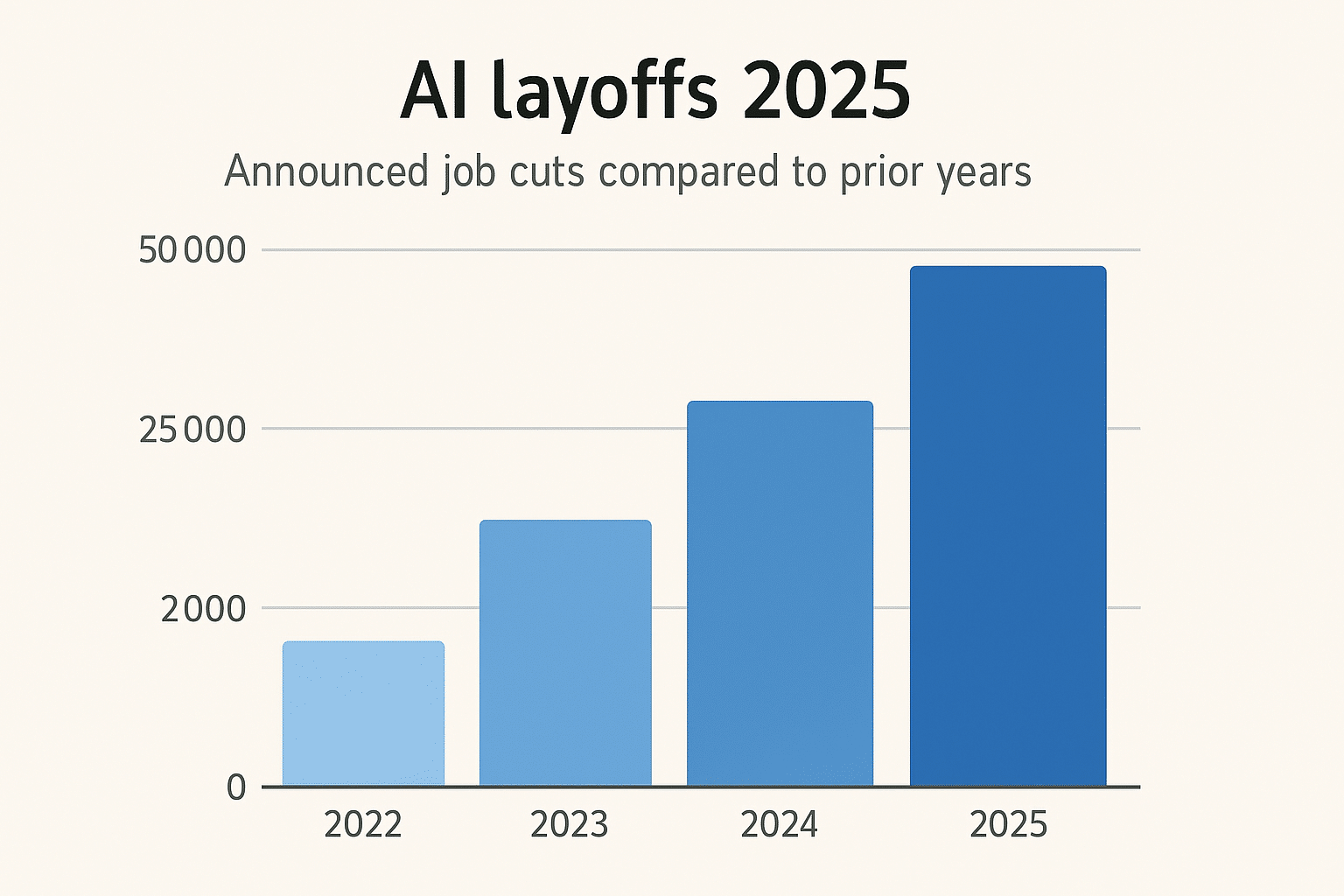






Leave a Reply